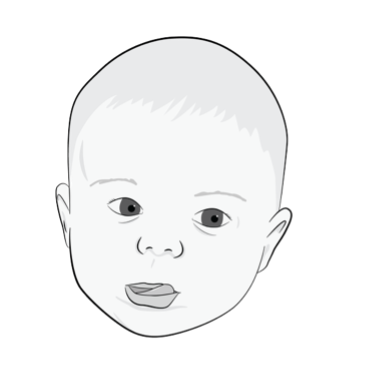
SOT® Pediatric Online Certificate Program
More than ever qualified pediatric chiropractors are in demand. Families are desperately looking for health care providers that are informed, experienced, able to communicate and have the practical skills to address the myriad health care challenges facing their children. With over a combined 80 years of clinical experience, Drs. Rosen and Watson’s 10-month premier SOT ® Pediatric Certificate Program is answering the call.
In this online comprehensive pediatric spinal and cranial evaluation and adjusting program, you will not only acquire the skills to become the go to pediatric chiropractic in your area, but you will build your confidence, up your game and acquire a level of expertise second to none.
Our program is the one of most comprehensive spinal and cranial evaluation and adjusting program in the chiropractic profession. You will learn a complete pediatric evaluation system for spinal and cranial dysfunction as well as meningeal, tonal, and structural adjusting procedures applicable to all your pediatric patients. Be confident, be successful, be able to produce the results you promise and create a fulfilling, lifetime centered waiting list practice.
What You’ll Learn
- Pediatric neurological and nervous system developmental
- Creating a pediatric case history and exam for both pre-ambulatory infant and 3+
- Rationale for pediatric care
- Specific indicators for spinal and cranial corrections: tonal, meningeal, intra-oral and external techniques
- Occipital fiber analysis: determine a vasomotor or viscersomatic subluxation
- Complete cranial examination and indicators for specific Chiropractic Cranial Adjusting ™ protocols, including intra-oral and external techniques
- Cranial anatomy, physiology, visual analysis, and condition techniques
- Pediatric TMJ, plagiocephaly, brachycephaly, tongue-tie evaluation and correction protocols
- Evaluating the pediatric palate
- Primary Reflexes
Resources Provided
- Video class modules
- Evaluation & technique presentations
- Practical demonstrations
- Calls to action (CTAs)
- Live calls with instructor
- Interactive private Facebook group
- Complete PDF workbooks
- Email access to Dr. Rosen & Dr. Watson
Why Take This Course?
Who Is This Course For?
Course Contents
40 Modules | 40 CTAs
Class 1 – The Case History
Class 2 – Spinal Examination of Pre-Ambulatory Infant
Class 3 – Occipital Fiber Analysis
Class 4 – Demonstration of Pre-Ambulatory Examination
Class 5 – Spinal Examination of Child 3 Years and Older
Class 6 – Demonstration of Examination on 4 Year Old
Class 7 – Pediatric Cranial Examination
Class 8 – CSF and Primary and Secondary Motion
Class 9 – Cranial Bone Movement
Class 10 – Dural Meningeal System and Sphenoid
Class 11 – Cranial Visual Analysis
Class 12 – Cervical and Occipital Meningeal Techniques
Class 13 – Pediatric Thoracic Adjusting
Class 14 – Pediatric Lumbar and Sacrum Techniques
Class 15 – Pediatric Pelvic and Ancillary Techniques
Class 16 – Type of Cranial Techniques and CSF
Class 17 – The Cranial Base and Adjusting Guidelines
Class 18 – Sphenoid and Sphenobasilar Corrections
Class 19 – Temporal, Occiput, and Frontal Corrections
Class 20 – CSF Balancing Techniques
Class 21 – Cranial Condition-Specific Techniques
Class 22 – Maxilla/Zygoma and Fruit Jar Techniques
Class 23 – Teething and Vagus Techniques
Class 24 – Symptomatic Cranial Corrections
Class 25 – Specific Cranial Correction Techniques
Class 26 – Rules of Pediatric Cranial Adjustingar Old
Class 27 – Temporal and Frontal Intra-Oral Corrections
Class 28 – Intra-Oral Sphenoid Corrections
Class 29 – Intra-Oral Occiput and Palate Corrections
Class 30 – Demonstrations: Occiput, Temporal, and Frontal
Class 31 – Demonstrations: Sphenoid and Palate
Class 32 – Cranial Adjusting Guidelines
Class 33 – Acute Pain Control Techniques
Class 34 – Pediatric TMJ
Class 35 – Symptomatic Clinical Corrections (Part 1)
Class 36 – Correlation of Findings
Class 37 – The Cranial Base and Adjusting Guidelines
Class 38 – Where Do You Start?
Class 39 – Review of Pediatric Spinal Findings
Class 40 – Review of Cranial Findings
Meet the Instructors
As early as first quarter in chiropractic school they were attracted to each other’s commitment to chiropractic and the pursuit of excellence. Their combined 80 years of personal and clinical and teaching experience, in delivering the chiropractic adjustment is unparalleled in the chiropractic profession. Their international outreach through teaching, writing and lecturing has been a driving force in their personal and professional careers since their first seminar taught together as students, in 1979.
Their years of experience have taught them what works and what does not work to create a successful practice and lifestyle. The more competent and comprehensive your expertise you will find that more patients will seek your services and your practice will grow exponentially.







